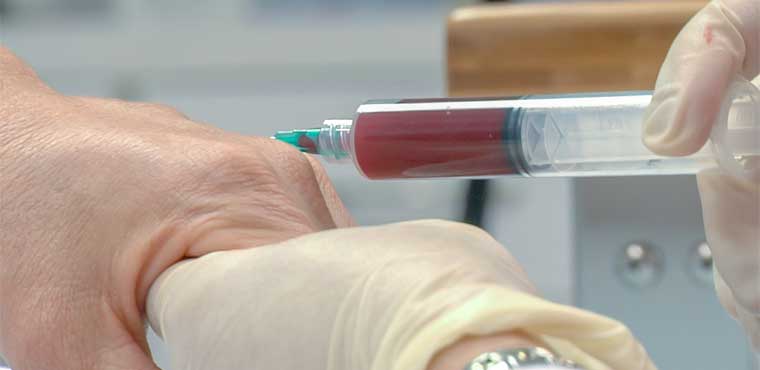Platelet Rich Plasma (PRP) Injections can be Performed for Many Medical Conditions
The purpose is to induce the body to heal a chronic injury. PRP is a procedure performed in the office using a patient’s own blood. Blood is drawn, like when getting blood tests, and then separated into its different components using a special device called a centrifuge. The platelet-containing component of the blood or PRP is then drawn into a syringe and injected into the injured body part such as joint or tendon using image guidance (ultrasound or x-ray). Platelet rich plasma is a promising treatment for several medical conditions that has proven to be safe. By using a patient’s own blood also known as autologous treatment, we avoid the risk of cross-reaction, rejection and disease transmission.

Leukocyte-Rich vs. Leukocyte-Poor PRP
When the platelet rich plasma is injected, the platelets release growth factors and cytokines that augment the natural healing process. This PRP also contains leukocytes (white blood cells) that also play an important role in healing. PRP can be further categorized into leukocyte-rich and leukocyte-poor preparations which have different indications depending on which body part and condition is being treated. Leukocyte-rich preparations are associated with “pro-inflammatory” effects and evidence supports its use for lateral epicondylitis (tennis elbow), patellar tendinopathy and plantar fasciitis (heel spur syndrome). Leukocyte-poor preparations are considered more “anti-inflammatory” and better suited for joints, such as in knee osteoarthritis.
Chronic Tendon Injuries or Tendinopathy
Platelet rich plasma may promote neovascularization, or new blood vessel formation, which may increase the blood supply and nutrients needed for cells to regenerate the injured tissue as well as bring new cells and remove debris from damaged tissue. These mechanisms of action may be particularly relevant in chronic tendinopathies, where the biologic conditions are unfavorable for tissue healing.
Knee and Hip Osteoarthritis (OA)
Efficacy studies of PRP based on severity of the knee OA have shown PRP to be more effective in patients with mild to moderate OA as opposed to severe OA. Studies have suggested that intra-articular PRP injections are more efficacious in the treatment of knee OA, in terms of pain relief and patient-reported outcomes, than other injection types such as steroids or hyaluronic acid(viscosupplementation). Although the data is limited, intra-articular injection of PRP for hip OA has been shown to be safe and somewhat effective in pain reduction and improved function as measured by patient-reported outcome scores. However, more studies need to be done regarding PRP injections in the treatment of hip OA.
Learn More

